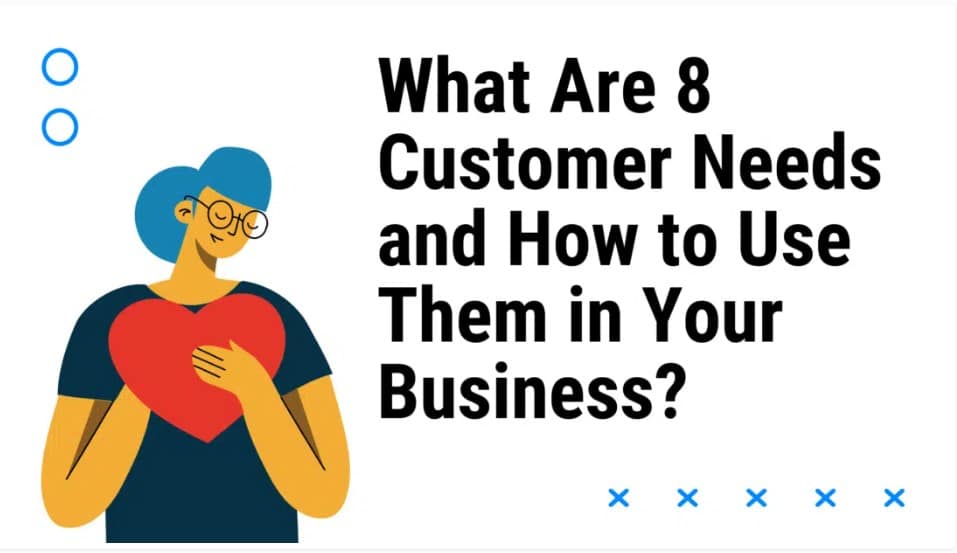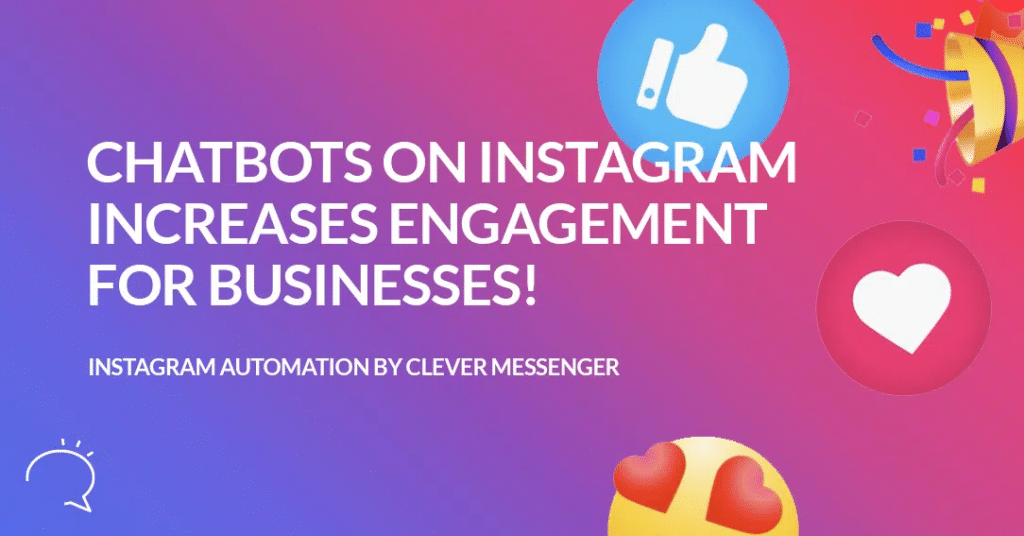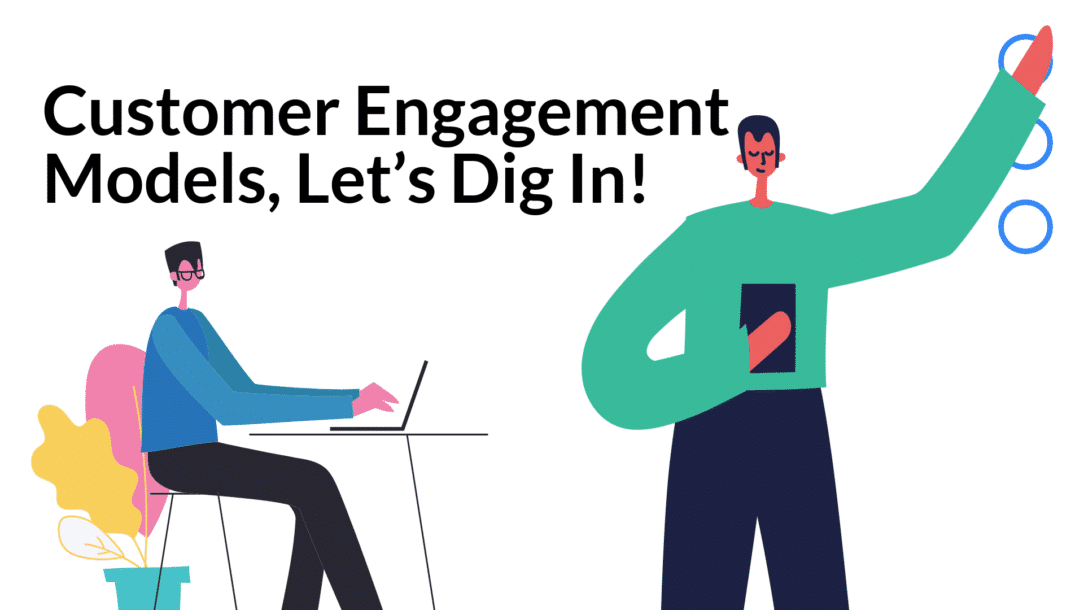Customer engagement has evolved into a crucial aspect that can make or break a business in today’s competitive environment. The best customer engagement models emphasize building genuine and long-lasting customer relationships rather than just using traditional marketing strategies.
These aim at developing long-term relationships with clients by providing personalized experiences that connect with them deeply. By prioritizing these engagement models, businesses can increase customer loyalty, drive customer success, promote repeat business, and ultimately achieve sustainable growth.
What Is A Customer Engagement Model?
A customer engagement model is a strategic approach businesses use to attract new clients and retain customers by building good relationships through various platforms. This tactic is typically known as customer success.
In the right engagement model, marketing and communication techniques are shaped according to customer needs and preferences. This could involve proactive customer outreach, targeted advertising, and personalized messages.

customer needs
To implement an engagement model, businesses can opt for various tools and strategies, including social media platforms, email marketing, loyalty schemes, and customer satisfaction surveys. Businesses can engage clients in a two-way conversation and forge enduring relationships with them by utilizing these channels.

Email Marketing KPIs
Customer Engagement Models Important Components
An engagement model encompasses various components that may vary depending on the business. Nonetheless, there are fundamental elements that most engagement models should include.
To begin with, guided engagement is the most important factor, which prioritizes the available information at each point of the experience. This method is generally used in interactive engagements, for example, one-on-one conversations with salespersons. It is beneficial when limited resources allow businesses to optimize their interactions effectively.
Moving on to the next, we have serial engagement, which aims to create a series of engagements leading to a specific goal. Salespeople, for instance, employ this method to direct potential customers toward an agreement to engage with the business.
Liner engagement, on the other hand, works to foster long-term customer relationships. This approach helps create loyalty and trust between the customer and the business over time. Financial institutions, for example, commonly employ this strategy.
Stages Of A Customer Engagement Model
Before diving into the details of a customer engagement model, you must know what the stages are in this trip.
To have a clear idea of all stages, make sure to understand the customer journey first. Simply put, the customer journey includes multiple stages in a person’s interactions with your business, from when they first realize they need something to when they choose to purchase from you—and even after.

Stages of a Customer Engagement Model
Unawareness
At its core, when a customer knows nothing about your business, it’s termed conversion. Unlike existing customers, these prospects have no prior understanding of your company or product. It’s here that project management becomes important to design informative and engaging, and quality content on Instagram, Facebook, or other social media platforms that can capture the attention of prospective customers.

Tips for Quality Instagram Content
Project management strategies enable you to design and implement a focused marketing campaign targeting your ideal market. Think of compelling social media posts, blog posts, and exciting videos that innovatively put forth your business value.
The goal must be to engage customers to build trust and credibility for your brand. By providing valuable information and insights, you can establish yourself as an authority in your industry and create a deeper understanding of your target audience’s needs and pain points.
Through effective project management, you can identify cost-effective solutions to address the challenges faced by your customers. You can customize your marketing strategies and product offerings to fit their needs and preferences by getting a well-rounded grasp of what they seek.
Discovery
The discovery stage is where the customers start to learn about your business. Considering the vast amount of media we’re exposed to these days, it can take more than just a few interactions for your brand to be remembered.
To make the discovery phase impactful, you should create content tailored to your audience. Once you have identified their pain points, questions, and needs, aim to meet their expectations. This way, you’ll make your brand the top choice for them when they need it the most!
Consideration
Now that you have gained customer acquisition, your business has entered the consideration stage. It is when the engaged customers start to seriously weigh their options and compare the solutions provided by your engagement model to those of your competitors.
One way to improve your chances of customer success is through content that showcases the value of your product or service. Testimonials and feedback from satisfied customers can help in increasing customer engagement. It also makes a strong case for why your solution is the right engagement model.
Since the prospects are seriously considering taking action at this stage, it is a must to stand out from your competitors by offering customer lifetime value and staying in touch via email. By providing valuable information or resources in exchange for an email address, you can establish a connection with a potential audience and nurture them over time.
With the right business engagement model and a focus on delivering value and building trust, you can increase your chances of converting your audience into loyal, paying customers.
Conversion
It is the stage after you have successfully convinced the customers that your business model solution is the ideal fit. Once done, the audience will “convert” into a permanent buyer. However, attracting an audience isn’t all; you must work on customer retention.
This tactic helps SaaS companies to achieve their business goals and enhance customer experience. Now, this is also where the effective onboarding process comes in.
It includes a series of steps, resources, and active support to help customers seamlessly integrate your product into their workflow and succeed. To ensure customers quickly receive value from your product, it’s important to establish clear goals and a streamlined onboarding experience.
Brand Loyalty
Until now, you have planted the seeds of emotional attachment for the right customer engagement model. A healthy customer success tree will grow if you feed it with focus, value, and time.
Customer-centric companies that prioritize their audiences’ needs and incorporate their feedback tend to generate brand loyalty. Handling even minor inconveniences gracefully is an essential part of the development process.
For example, issues like refunds, long wait times, or slow customer support must be addressed immediately.
Choosing The Right Business Customer Engagement Models
When you completely understand the aforementioned stages, have a look at some of the best customer engagement model examples.
High Touch Models
The high-touch models are customer success strategies that focus on building strong relationships with the audience by providing attention and support. These models involve direct and frequent interactions between the brand and its customers to ensure tailored onboarding and success for existing and new customers alike.
Example
Take Spotify and Salesforce, for example. Spotify’s product idea is a $10 monthly subscription which is not cost-effective to invest in live onboarding for each user. Yet, Salesforce’s $15,000 new accounts make it worthwhile as successful onboarding contributes to higher customer lifetime value.
The great advantage of this engagement process is that it allows the collection of direct feedback from customers. Because quick responses to customers’ issues can outweigh the cost.
To explore another example, consider the concierge service luxury hotels provide. The hotel workers give personal attention to guests, attempting to satisfy their needs and make their stay satisfactory and delightful.
This could be anything from arranging transport and making reservations for dinner to imparting insider information on regional attractions. The devoted team goes above and beyond to create a unique experience that leads hotels to enhance client loyalty and create positive word-of-mouth.
Low Touch Models
When it comes to higher-volume solutions for less pricey products, the low-touch engagement model makes the most sense. At this point, the drive engagement goal remains to ensure that the new customers are still acquainted with your products.
These models allow businesses to target and pay for specific leads and customers they want to reach. By developing such models, companies can have greater control over how they deliver their messaging, at what cost, and to whom.
Example
A variety of low-touch customer engagement model examples exist, including standalone media buys that leverage flexible digital ad solutions, as well as email and direct mail campaigns that utilize existing data.
Furthermore, primary and secondary research can be conducted to identify key customer characteristics, while upfront targeting can maximize conversions that align with customer profiles.
You can also create a customized product or service value proposition that caters to the specific needs of target customers. This can include a demo of the product or service, along with easy ways to access it.
Retention Models
Retention models are invaluable for businesses looking to improve their customer engagement and increase customer loyalty. These models help identify trends in customer behavior and predict which customers will make a relationship with the company.
These tools can assist in data analysis, such as examining purchase history, customer characteristics, and engagement metrics to build a comprehensive view of customer patterns. Businesses can look to create tailored retention plans to improve customer satisfaction and lower churn rates by identifying who is most likely to stay.
Example
A business based on monthly or yearly subscriptions uses a retention engagement model to predict which customer will end the subscription soon. This is determined by analyzing data like product usage frequency, the time that passed since the last payment, and customer feedback.
Doing so allows businesses to develop a predictive model that identifies customers at risk of churning. With this data, businesses can build retention strategies such as offering discounts, additional features, and improved customer support to reduce the likelihood of customers canceling their subscriptions and offer enhanced satisfaction.
Automated Retention Models
Designed to track and project the patterns of customers, the automated retention models are a set of algorithms that identify those who are at risk of leaving your business.
These models utilize historical data to identify trends in customer behavior, allowing businesses to target those with personalized offers and messages to keep them engaged and loyal. The main purpose of this engagement model is to boost customer retention rates and reduce churn.
To keep your customers engaged and informed about your product and prevent them from leaving, plenty of automation tools can help. For example, you can set up automated engagement email campaigns that provide educational resources to your customers over time. Many businesses also use chatbots on Instagram and Facebook to streamline their customer support process and make it more efficient.

Instagram Chatbots for Customer Engagement
Example
Suppose you run an online clothing store and notice an unusual behavior of your regular customers. It is that they haven’t made a purchase in a while. You can use this approach and send targeted offers to make them stick to your brand.
For instance, you can email them a 10% discount code for their next purchase, recommend products that are similar to their previous purchases, or share special sale offers for your relatively high-cost products. This kind of personalized campaign will enable you to re-engage these customers and keep them coming back to your store.
CSM-Driven Retention Customer Engagement Models
This engagement model is important for business success because of its idea of using customer success managers (CSMs) to boost engagement and improve customer satisfaction.
It allows companies to proactively identify and address potential issues before they become major problems. These are also responsible for identifying every key factor, such as product quality, customer support, and overall satisfaction.
When assisting the customers closely and monitoring their behavior, CSMs can quickly identify areas where improvements are needed and take action to address these issues.
Example
Let’s say that a software company is struggling with customer retention. Even though it offers them high-quality products, customers still leave every few months. With the right use of a CSM Driven Retention Model, the company determines the major issues leading the customers to leave and addresses them immediately.
To identify the most common reasons, the business conducts surveys, closely examines customer feedback, and reviews support tickets. Once the main issues have been pointed out, the company works with CSMs to develop targeted engagement strategies to resolve every issue raised.
That said, if someone leaves because they are not getting the support they need, the company will implement a new and dedicated team where every service provider ensures faster response times and personalized assistance.
Hybrid Models
As businesses continue to evolve, a hybrid approach is another great way to ensure customer success. This engagement model includes traditional and modern methods to help you stay one step ahead of the customer journey.
Therefore, a hybrid engagement model will provide a seamless experience to customers by integrating both online and offline channels. In this way, you will be able to maximize the overall customer reach and create a more holistic engagement model.
Usually, industries where customer engagement is critical to success, such as retail, healthcare, and finance, opt for this approach.
A hybrid engagement model helps businesses attract an audience at different touchpoints throughout their journey. Whether it is through the remote developers’ work by your tech partner for social media and emails or an in-house team working on better one-to-one interactions.
Example
To better understand how hybrid models work, let’s take the example of a clothing retailer. The retailer uses a combination of online and offline methods to gain and retain customers.
For the online trick, the retailer opts for social media as the main platform to showcase new products and offer special discounts to the audience. They also make use of email marketing to send personalized recommendations based on a customer’s past purchases.
However, on the offline front, the company offers better in-house experiences, for example, personalized styling sessions or events where customers are allowed to preview new collections. They also form a strategy to provide loyalty programs to frequent customers.
When these methods combine, the business can create a one-of-a-kind experience for customers.
Collaborative Product Roadmap
Picture yourself in a saturated marketplace filled with a multitude of merchants competing for the attention of potential customers. Each retailer has their own unique product to offer, but none of them seems to be standing out in the sea of competitors.
What if they all joined forces to create something truly remarkable? This is the idea behind Collaborative Product Roadmaps for engaging customers.
It is simply a is a strategic planning tool that many businesses use to align their product development goals with the needs of their customers.

Clepher Roadmap
The purpose of this model is to bring together cross-functional teams from different departments within a company and collaborate for a shared goal. Using input from multiple teams and stakeholders results in a product that surely meets the needs and expectations of the target customer base.
Example
A company that sells eco-friendly household products, like cleaning supplies and reusable containers, wants to create a new product line for busy families with young children. They form a dedicated team model and include members from various departments, like marketing and customer service, to work on this project.
The team begins by researching the needs and wants of its target customers. They find out that families want safe and environmentally friendly products for young children to use. Using this information, the team creates a line of cleaning products that are free of harmful chemicals and come in child-friendly packaging.
As they work on creating the new products, the team maintains regular communication with each other and with the groups of target customers. This tactic ensures that the final products will be according to the consumers’ expectations and needs. Once they launch the new product line, it gains immense popularity and engages more customers.
Elevating Customer Experience Through Engagement Models
In today’s competitive market, customer engagement models play a vital role in business success. With the involvement of tech partners and taking customer feedback into account, you can create products and services fulfilling your customer’s expectations.
So, the future of customer engagement is here! Clepher is the answer to your communication woes, offering state-of-the-art chatbots that will leave your audience in awe. Our platform boasts a suite of innovative features, including dynamic conversation flows, intelligent natural language processing, and effortless integration with your existing systems.
Our chatbots are versatile and customizable, designed to meet the specific needs of your business. Embrace the power of cutting-edge technology and elevate your communication game with Clepher. The possibilities are endless – join us today!
Related Posts



